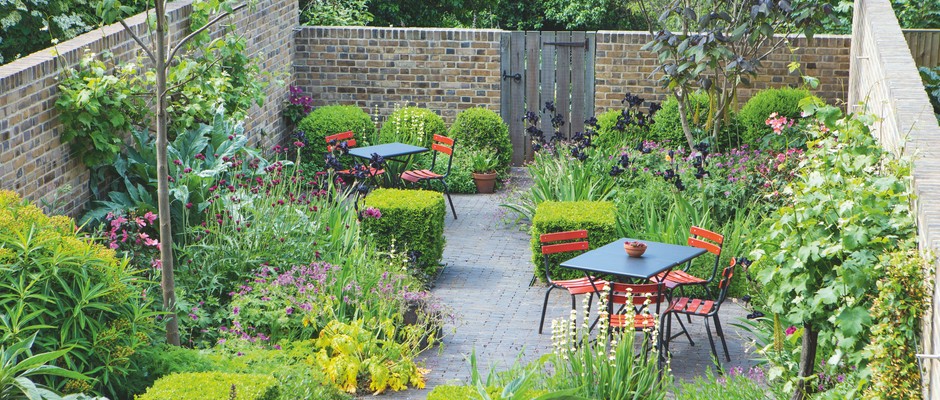
10 ways to improve your garden
Award-winning garden designer Jinny Blom gives us her 10-point plan for improving any garden.
What can we all do to transform the garden, the most important room in the house? Dreams are free and winter is long, so the months when you can't do much gardening are the perfect time to assess the humdrum and bedraggled mess of spent garden pots, tatty furniture, drunken fences and questionable paving and get to work on creating a realisable garden dream. Personally, I find that sharing ideas is invaluable.
So let me help you with my ten essential ideas for transforming your own garden into a space that will make you proud. I applied all of these principles to my own London garden, pictured above.
Boundaries
First port of call: what are the garden boundaries and do you like them? Look out of each window and consider what meets the eye. Does it do justice to your interior and your sense of aesthetic value? If it is a solid but ugly boundary such as a wall or a sturdy fence then it can be clad, using some imagination, in something more evocative. Try bundles of tall hazel rods sewn together with rough manila rope. This will necessitate some research into either tree surgeons or local woodland trusts to find out who is coppicing, and then a bit of effort. The complex density of the hazel will become a little city of insects and last around five years.
I love charred timber fences, and chestnut – or even band sawn oak – a blow torch and a strong wire brush for rubbing back, makes a lovely finish. And charring is a natural preservative. Alternatively you could spray your fencing a deep graphite grey or a chalky ointment pink and bounce some light back into a dreary corner.
Flowers
Now is a very good time to be completely ruthless about garden borders. Were they really any good this summer or are you simply being sentimental? If in doubt, grub it out. A clean sweep means you can freshen the soil, add lots of muck and start again – even just enough time to get new bulbs in too. Consider the orientation and available light, and then get to work on colour.
Gardens Illustrated has done some fantastic articles on how to plant a border and it’s worth studying these and giving the scheme a head start. Play with colour, heights, flowering seasons and throw in your interests such as ornamental grasses and butterfly- and bee-friendly plants. Winter gardens (vernal gardens) are marvellous for a north-facing bed as they are in full kick in winter and spring, and can then get quieter and go over to ferns and the like.
Trees and shrubs
Pruning and training is a very inexpensive route to creating a new look by managing mangled and overgrown shrubs and trees. I created a whole new garden once from a very dark and revolting looking Victorian laurel shrubbery. By exposing the underlying garden structure and lifting the canopies a wonderful and mysterious world was revealed.
And you have other options – why not plant a tree, a big beautiful one, and add a new dynamic to your garden? Think about whether your trees and shrubs are compatible – try to create a look that has coherence. Ask yourself if you have a favourite place you’d like to emulate. What are the most evocative planting combinations for you? In the UK you can pretty much have it all as our climate is so forgiving. Consider the usual and infinitely affecting choices for seasonal change; colour, blossom, fruits and berries, leaf shapes and textures, and then create your new look.
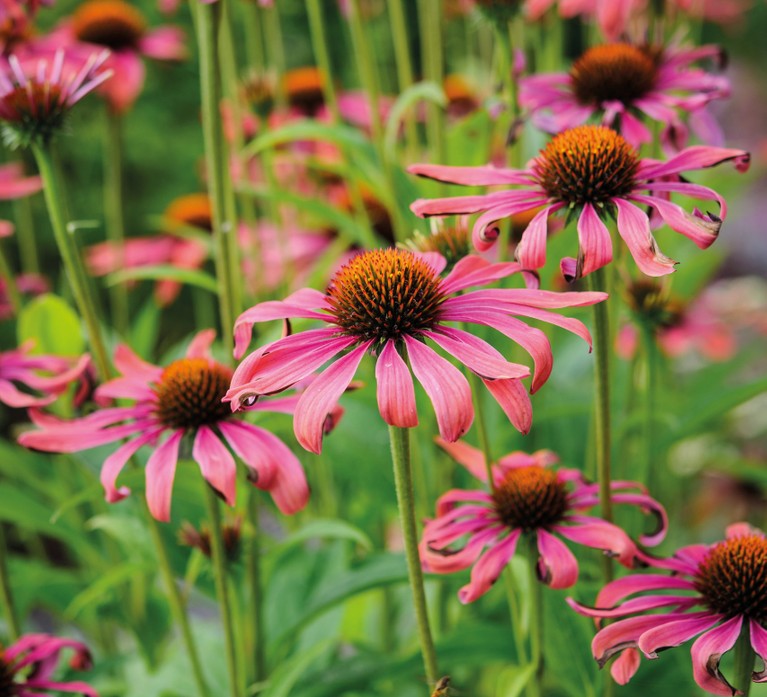
Garden pots and containers
The bigger the better! Anything as long as it’s big. Plants need a lot of root space and water and stability from wind. To make the plants happy and to minimise how much human effort is required to keep them going, choose big. I like all sorts of plant pots so look out for nice galvanised ones, or well-made coopered wooden pots with steel bands (try Dewiltfang) or great big plain Italian terracotta pots. It is worth spending as a good one will last forever. Consider very carefully where it will go, as once they are filled they are hard to move.
Eating
The pleasure of gathering one’s own food from the garden is a pleasure unsurpassed. Smugly setting down a tiny bowl of tiny alpine strawberries from a garden three feet square knowing the flavour will provoke admiration and envy. Why not make veg beds and herb beds on legs like tables so they are easy to manage and away from the neighbour’s cats (don’t get me started)? It’s relatively easy – and advisable – to protect table beds with netting. Maybe building a proper outdoor kitchen is a consideration. Pizza ovens are easy to build and can be used as a wood-fired fireplace even if you aren’t hungry.
If it moves, include it
Birds, bees, butterflies, foxes, hedgehogs, dogs, cats and squirrels will use the garden more than you do. There are many things on the market now to ‘encourage wildlife’ but nothing does that better than good design and intelligent planting for wildlife. Thrushes like good solid hedges, especially yew topiary. I have wrens nesting in Cissus striata, and the pond is full of life – newts, dragonflies and damselflies. The pond is formal, but they don’t mind that one bit.
Foxes lay a trail across a garden from which they rarely deviate so if you have them, include their route and save the misery of mashed up plants. The loathsome grey squirrel has to be endured, as do parakeets here in London, but I suppose all life is better than no life.
Bees are to have kindness lavished upon them and the only bits of kit worth buying are bumble bee houses and mason bee nests. Both are fascinating and instructive.
Surfaces
There is more to life than cheap concrete paving and sometimes one can alter the quality of a small garden immeasurably with a good floor. I very much like decking, even though it’s a faux pas to say so. I do, however, like reclaimed timber best as it has an integrity to it, whereas new hardwood evokes guilt however prominently the FSC label is displayed.
Lately there is a revival of interest in encaustic tiles and patterned concrete tiles [try Emery & Cie]. Most Victorian houses used to have gaily tiled front paths in complex patterns. I almost went for grey and black encaustic tiles in my own garden, but then opted for tiny brick pavers from Belgium [try Wienerberger].
Gravel is another favourite, especially if you have uneven ground to contend with and wish to avoid enormous amounts of levelling. But do make sure it is properly laid rather than just scattered like crumbs over the surface.
More like this
Views
Boundaries are also intricately linked to views. It is vital to consider these and be very selective. My own garden only has one good view and everything else needs to fade into insignificance. Don’t block a bad view – fade it out. Blocking views with leylandii or whatever only draws attention to them and makes a bad aspect worse. The fade is a subtle and effective solution – a gauzy shrub such as Genista aetnensis will soften and render invisible an ugly view and thus lend intensity to a good one. Tangential views are as charming as full frontal, so consider flinging a path off at a wonky angle to suddenly present you with the view you never knew you had.
Water
Every garden must have water – it really doesn’t matter how you do it, but do it. It could be tiny pools made from old washing-up bowls, Japanese water stones or ponds of any size and shape – from formally edged to contemporary to muddy wallow. Just make sure you have water features – yes, even an overturned Cretan pot with a pump will do because when you see the blue tits in it having a bath, you will feel nothing but delight.
In Turkey there is a long tradition of musical fountains and they used to be things of great charm and distinction. The modern equivalent has a terrible battery operated music box inside, but what the hell. Kitsch is fantastic and better to have musical water than no water at all.
Think about wall plaques – there are gorgeous ones to be had and they animate a tiny space beautifully [try ceramicist Lucy Smith]. Save water as well; water butts and tanks are vital for the garden especially in these varied climatic conditions. To me, wood and water are better than cash in the attic.
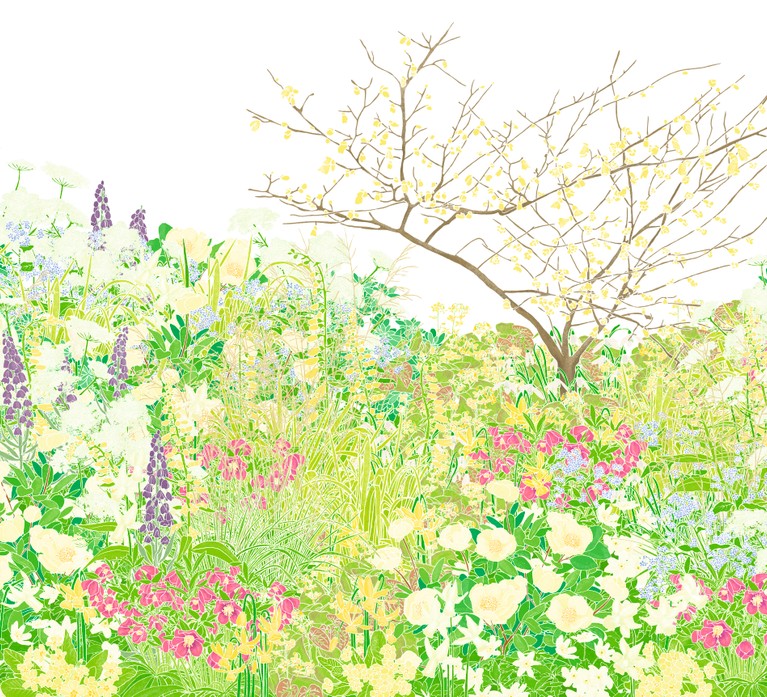

Niwaki bundle worth £57 when you subscribe
Subscribe to Gardens Illustrated magazine and claim your Niwaki bundle worth £57
*UK only
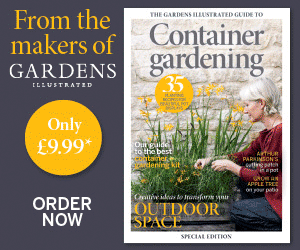
Container Gardening Special Edition
The Gardens Illustrated Guide to Container Gardening.
In this special edition, discover colourful flower combinations and seasonal planting schemes for pots designed by leading plantspeople, and essential know-how for container gardening success. Just £9.99 inc UK p&pBy entering your details, you are agreeing to our terms and conditions and privacy policy. You can unsubscribe at any time.
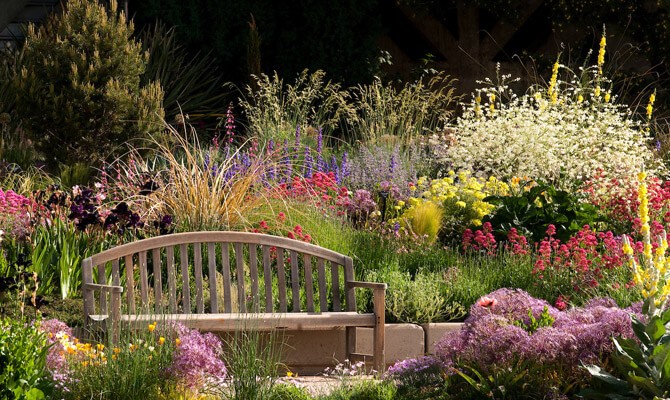
Gardens of the Globe
From botanical wonders in Australia to tranquil havens closer to home in Ireland, let this guide help you to discover some of the most glorious gardens around the world
By entering your details, you are agreeing to our terms and conditions and privacy policy. You can unsubscribe at any time.




